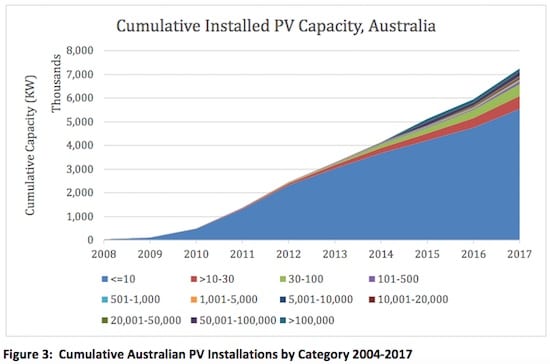Big solar is well and truly booming in Australia in 2018, with new data from the Australian PV Institute confirming that there is a massive 35GW of solar farms in the nation’s planning and development pipeline.
In its latest annual update to the International Energy Agency, APVI says 2018 looks certain to be another another record year for Australian PV, fuelled by a booming big solar market and “outstanding” economic fundamentals for residential and commercial PV.
After a 2017 that saw Australia’s cumulative installed PV capacity sail past 7.2GW, and account for nearly 4 per cent of electricity demand, there is now more than 1900MW of solar farms under construction and 35GW in various stages of development, the report said.
But the report notes that, with the RET due to be met ahead of its target date, and with no new policy incentive to replace it, more than 20GW of PV projects will be searching for an alternative pathway to commercialisation.
APVI, however, doesn’t seem overly concerned about this.
“Though a policy gap may occur, there is acceptance among incumbent electricity businesses and regulators that renewable energy is the least cost source of new-build electricity, and will soon outcompete Australia’s existing generation fleet that are progressively needing refurbishment,” the report says.
On the smaller scale, the report confirms that a world-leading 20 per cent of Australian households host one of 1.8 million PV systems – more than over 160 000 of which were added in 2017.
“Australia’s high electricity prices and inexpensive PV systems means payback can commonly be achieved in 3-5 years, a situation that looks set to continue in 2018,” the report said.
“Momentum is building for further acceleration of commercial PV deployment, and corporate interest in solar PPAs is emerging,” it said.
The average PV system size continued to grow steadily, too, as residential system sizes increased and a growing number of businesses invested in PV.
Panel prices. meanwhile, continued to decline, and system prices reached record lows.












